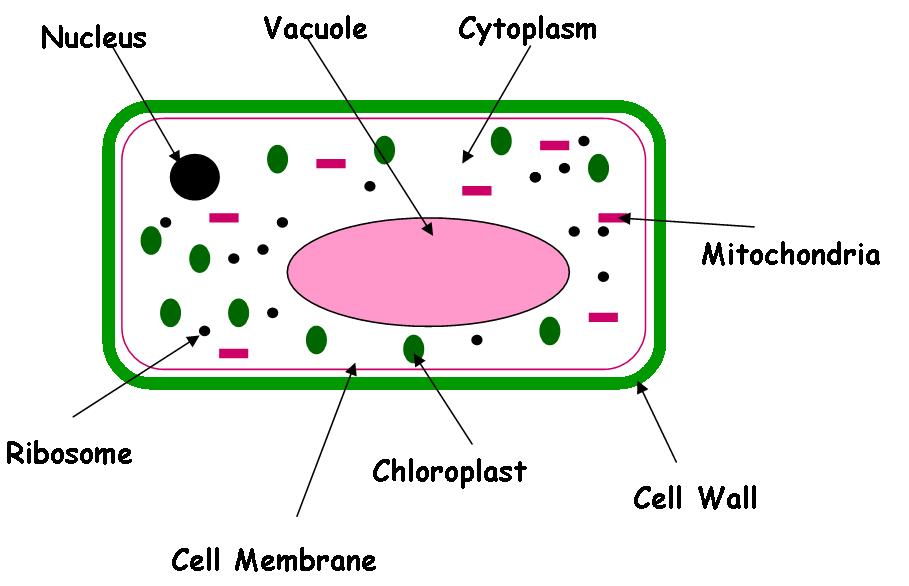
Cell structure and organisation
Core
1.Know what Living Organisms are made from
2.Identify and Describe the structure of a Palisade cell and a Liver Cell
3.Describe the differences in structure between an animal cell and plant cell
Extended
1.Relate the structures seen under the light
microscope in the plant cell and in the animal
cell to their functions
All living organisms are made from cells although they do vary, we will be looking at the differences between a plant cell and animal cell in detail. There aren't too many parts to remember in a simple plant cell so lets get to it.
Nucleus - This is where the genetic information of the organism is stored. This aids the cell in creating the correct types of proteins. The genetic information from a nucleus is kept in Chromosomes which are made of DNA inherited from the organisms parents.
Vacuole - The vacuole contains cell sap and within cell sap are a collection of sugars and other such substances in solution. The vacuole also pushes on the cell, keeping it in shape.
Mitochondria - These can be known as the 'powerhouse' of the cell. Inside Mitochondria Oxygen is used to release energy from Glucose in a process known as aerobic respiration. Unsurprisingly, cells which need a lot of energy/use a lot of energy (Sperm Cells for example) require a lot of Mitochondria.
Chloroplast - Within Chloroplast is the pigment Chlorophyll which is in fact what makes plant leaves green. Chloroplast are the location of Photosynthesis in a plant, this is where sunlight is trapped and combined with Water and Carbon Dioxide to produce Glucose. Glucose is then converted to Starch or Sucrose for reasons which will be discussed later (Mainly they are simply better at storage/transport)
Cytoplasm - Cytoplasm is the area where many different metabolic reactions take place (photosynthesis, respiration) and it contains many substances dissolved in it, mainly proteins.
Cell Membrane - The cell membranes job is to control what enters/leaves the cell - you may have thought that would be the job of the cell wall, not so as the cell wall is what we call 'fully permeable' this means it allows any and all substances through it whereas the membrane is 'partially permeable' only allowing substances of a certain size through.
Cell Wall - The job of the cell wall is the protect the cell as a whole, the cell wall is made of cellulose which fibers which criss-cross over one another to form a very strong protective layer. For example if the cell takes in too much water by Osmosis, the cell wall will stop the cell wall from bursting when it swells.
Ribosomes - These are the places where Proteins are made. Upon receiving instructions from the nucleus detailing what proteins need to be produced, Ribosomes join many amino acids together in a long chain.
Starch Grains (Not on Diagram) - Chloroplast often contain grains of Starch which have been made by photosynthesis, they are basically molecules glucose which have been converted to Starch for Storage (food storage for the cell).
Glycogen (Not on Diagram) - Animal cells contain these as opposed to starch and are once again molecules of glucose which have been converted for storage.
What's The Difference?
It's pretty Simple,below is a list of things you will find in an Animal Cell and things you will find a plant cell.
Ribosomes - A & P
Cytoplasm - A & P
Membrane - A & P
Wall - P
Nucleus - A & P
Mitochondria - A & P
Chloroplast - A
Vacuole - P (smaller versions can be found in animal cells as well)
Starch Grains - P
Glycogen - A
Chroloplasts are present in plants only. Change A to P
ReplyDeleteChloroplasts is presents is plant cells, not in animal cells.
ReplyDeletechange A( animal cell) to P (plant cell). Thank you.